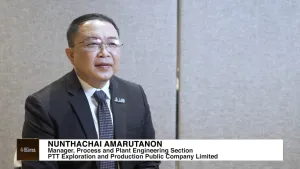
Seamless automation and electrical integration through IEC 61850
A unified platform saves time and cost while providing effective risk management.
In the power generation and water industries, there is a growing demand for more cost efficiency, environmental compatibility, and plant operation flexibility, whereas these are achieved to a limited extent in a traditional Process Control System (PCS).
To support and implement more efficient operation and maintenance processes, there is a need to access larger volume of relevant information, including from the electrical installations that supply the process with power. Having the right information at the right time and place makes a huge difference to the operational availability and efficiency for the entire plant.
The relevance of the IEC 61850 standard for electrical integration
The introduction of open standard in electrical systems brings the simplification of electrical integration a step higher. A suitable PCS makes use of these advantages and helps develop a consistent concept. With the use of Intelligent Electronic Devices (IEDs), more information are available in electrical systems, which when integrated into the PCS result in more cost efficient operation and maintenance. A possible solution for integrating the process and electrical control systems can be implemented using the IEC 61850 communication standard.
A typical utility or industrial process can be divided into; i) Process control equipment, ii) Low voltage systems, iii) Medium high voltage systems. Process control equipment consist of instrumentation, safety systems, and controllers where the devices communicate via PROFIBUS or Hart protocols. Low-voltage systems consist of actuators and motor where these devices typically communicate with the process control system via PROFIBUS or Modbus protocols. Medium and high voltage systems, along with the associated protective relays (IEDs), transformers, converters, and meters communicate via the IEC 61850 protocol for process electrification, power distribution and management. IEC 61850 chief benefit is interoperability, where protection and control devices from one or more manufacturers can exchange information with each other.
An object-oriented data model serves as a basis for control system integration. It abstracts all the relevant components and functions of electrical equipment - like circuit breakers and overcurrent protection - into so-called ‘logical devices’ and ‘logical nodes’. For vertical communication between protection and control devices and the operations level, the IEC 61850 standard uses the Ethernet-based manufacturing message specification (MMS) protocol. For horizontal communication between protection and control devices, IEC 61850-GOOSE is used, fulfilling the requirements for very quick transmission of protection or interlocking signals via the Ethernet station bus, thus replacing most of the fixed wiring or serial communications between the protection, control devices and the PCS.
S+ Operations – complete plant information
In the past, the main limit to increased productivity was to aggregate data from different sources and transform it into meaningful information that can be presented to operations, maintenance and engineering personnel in their respective contexts. This is more critical when simultaneously treating process, electrical and supervision data.
S+ Operations, Symphony® Plus’ human machine interface (HMI), provides easy and flexible data access in order to facilitate operational decisions. Its operator workplace is optimized for better user convenience. “S+ Engineering provides an innovative approach to engineering, based on seamless data exchange between the integrated tools”
Navigation options are available, designed in accordance with advanced ergonomics principles. In an integrated system, all relevant information are presented in a way that offers the best possible benefit. S+ Engineering provides an innovative approach to engineering, based on single front-end for all system engineering tools, consistent checking of the system design, single-point entry of data and the simple reuse of this data, and seamless data exchange.
S+ Control CI850 IEC 61850 module, the latest addition to the Symphony Plus family of controllers, provides connection between Symphony Plus controllers and IEDs, thus allowing easy integration of elements such as bay control and generator protection units. Each device’s resident information can then be used in control strategies and higher level applications.
Integrated PCS offers a multitude of benefits throughout the system life cycle from design and engineering to operation and maintenance and future extensions. A common database can be used simultaneously by operators, maintenance and service personnel, as well as by plant engineers. Condition-based and predictive maintenance activities can be scheduled simply by connecting the PCS to higher-level enterprise systems and maintenance management systems, thus preventing unexpected and costly downtime.
To learn more about ABB’s electrical integration, contact your local ABB office or visit www.abb.com/powergeneration.



















 Advertise
Advertise







